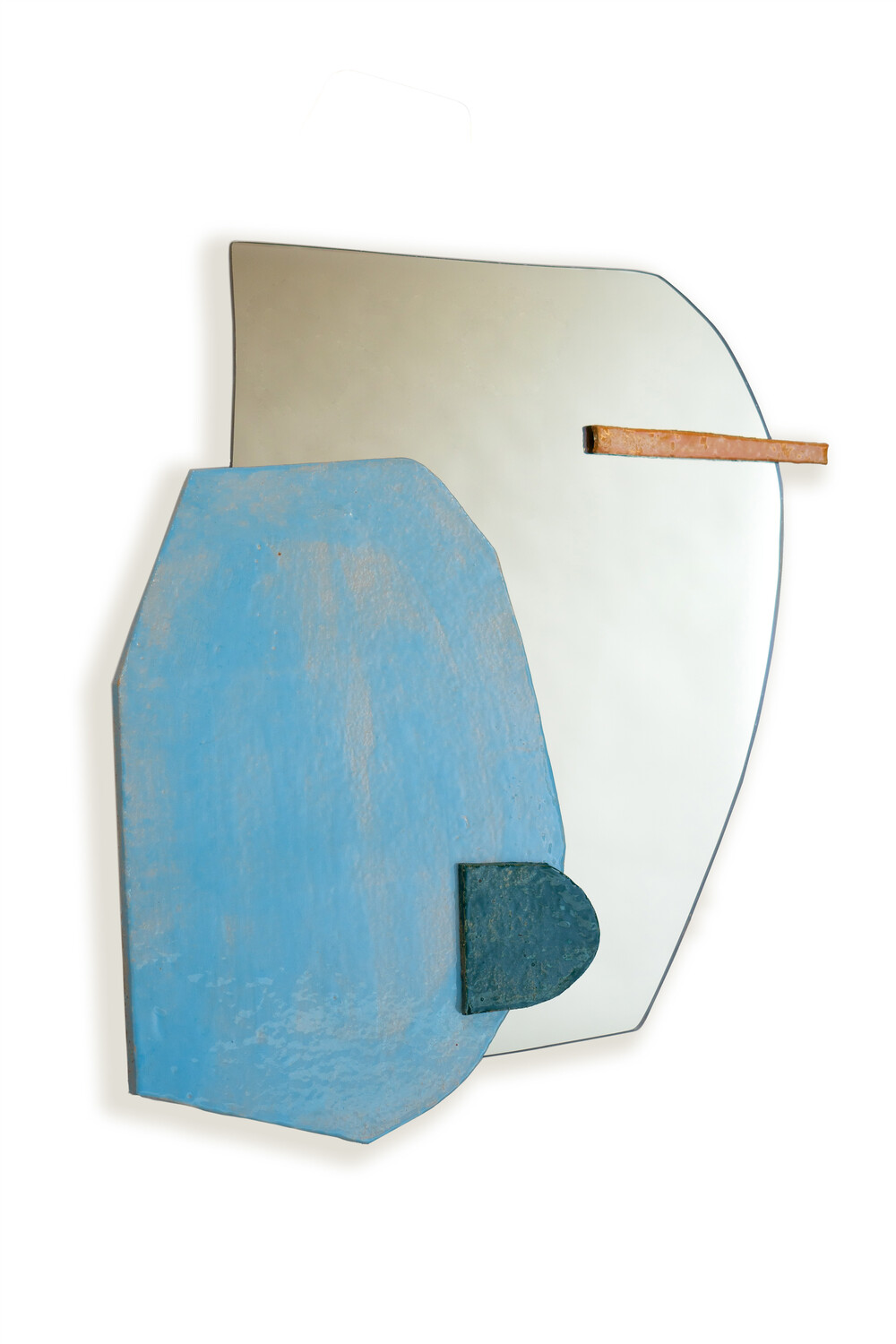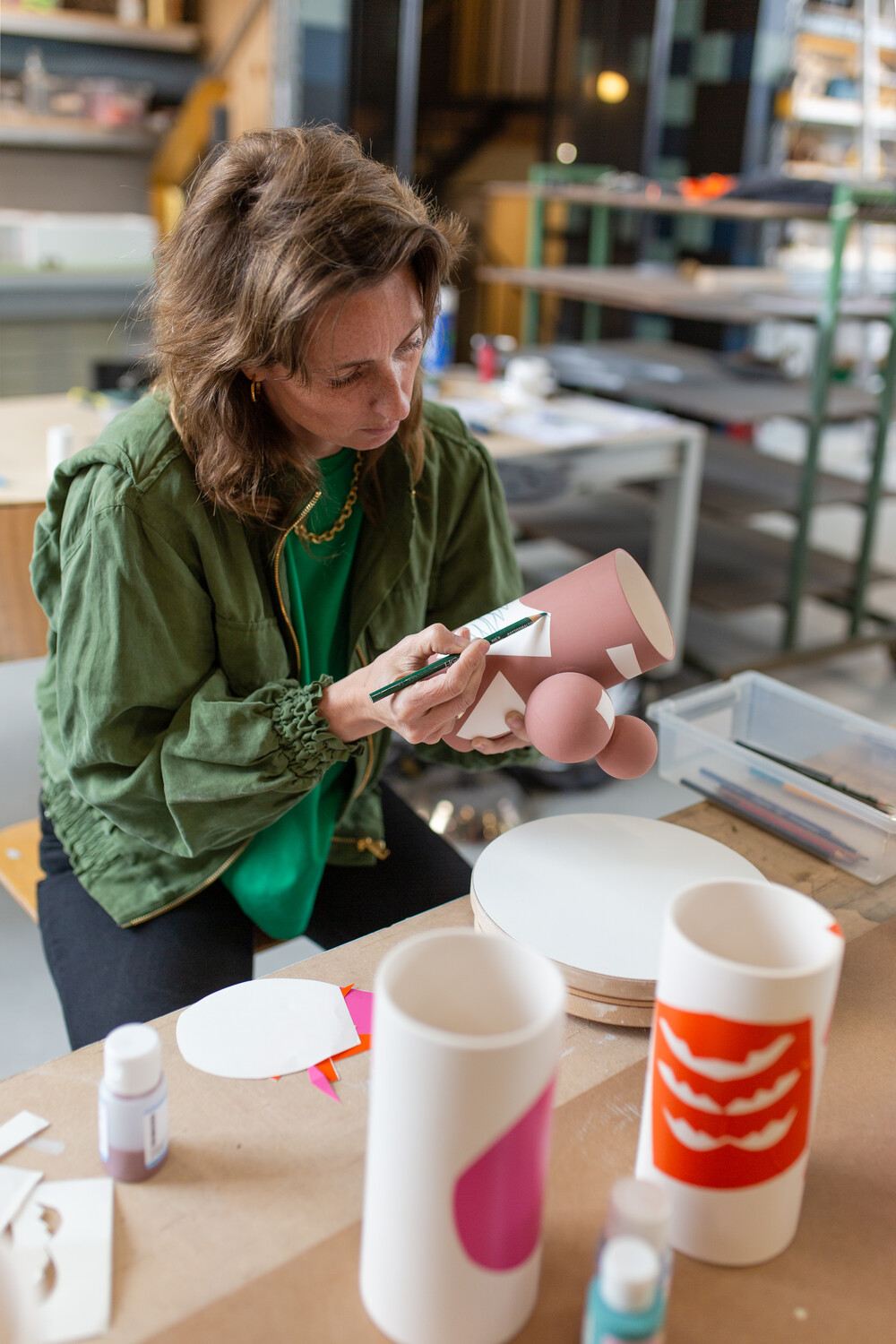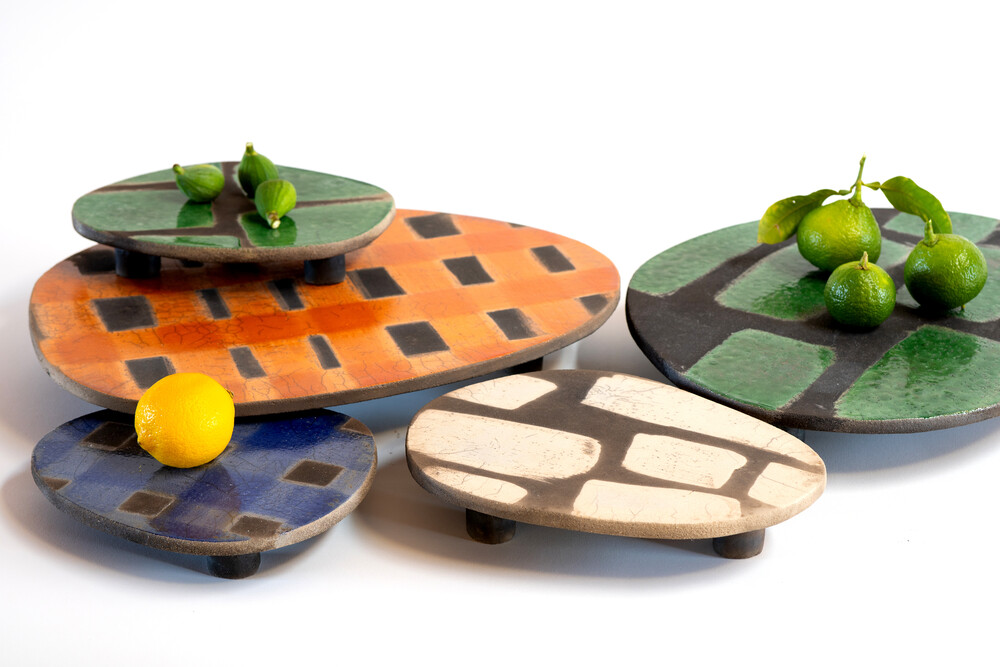
“I enjoy working simultaneously with different techniques and materials: it inspires, motivates and innovates”
Kiki van Eijk
Kiki van Eijk is a Dutch designer, ceramist, artist and teacher at the Design Academy in Eindhoven. Together with her partner Joost van Bleiswijk, she founded Studio Kiki&Joost. MAD had a talk with Kiki to explore her colorful design world.

Can you briefly introduce yourself?
"I was born in 1978 in Tegelen. Already as a child, I was always tinkering and drawing. When I was 17 years old, I was accepted to the Design Academy in Eindhoven where I graduated cum laude in 2000. It was a crisis at the time so partly out of necessity I started my own studio. This ended up being a very happy and enjoyable course for me. Throughout my life and my work, I operate primarily from intuition. Ratio I use as a tool."
"I also try to teach this to my students within the "Thinking Hands" course I set up 1.5 years ago together with Joost at the Design Academy in Eindhoven, where I also teach."
In the meantime, you started the design studio Kiki & Joost with Joost van Bleiswijk?
"Joost and I share a joint building that we built ourselves to our own needs. It consists entirely of douglas wood and is energy-neutral. It feels like a playground where we are constantly experimenting with different techniques and materials, very hands-on. However, we mainly make our own work. Occasionally we work together, but then each does his/her own part that he/she is good at. Even though Joost and I each have our own company and clients, we do use each other as sounding boards, sparring partners, editors-in-chief. We constantly keep each other on our toes as we rarely agree straight away. So this always leads to different outcomes than when you design something on your own. It is very interesting, but also intensive, which is why we only do it on rare occasions."
"In every project, I try to be guided by the process as much as possible. Every project requires a different approach, which is why I have no fixed design methodology. My work alternates between commissioned and autonomous work, which I find a pleasant and inspiring combination."

In your practice, you work within different disciplines; for example, you work both with textiles and ceramics. Yet two very different materials. How do these different disciplines influence each other in your work?
"I enjoy working simultaneously with different techniques and material: it inspires, motivates and innovates! Ceramic is hard and textile is very soft. On the one hand, they form a huge contrast with each other but both materials are also very fragile and tactile. For me, that is the connection between the two and probably the reason why I have such a fondness for them. The materials play on your feelings as a user or viewer, but they are also very meditative to work with as a maker. Both materials have something very earthly and human, but are also very poetic. I find this aspect very fascinating."
"I am currently working on a new autonomous project in which I will combine ceramics with textiles. To be precise: raku with passement, a hand-beaten rope that I am developing in collaboration with the TextielMuseum Tilburg. So one discipline goes into dialogue with the other discipline through my work, so to speak. It’s a non-verbal communication!"

You have collaborated with Serax, how did this collaboration come about?
"Years ago, sometime early in my career, my soft teapot (a teapot sewn from textile and then cast off in ceramic) was featured in a report on my then studio in Elle Deco. The then owner and director of Serax, Frank Lambert, then called me to make an appointment and see what we could do for each other. The teapot was already included in Cor Unum's collection, so I decided to make something new especially for Serax. This design is still in their collection to this day: the paper bags. Perhaps it is time to revisit what I can do for their collection at this time."
What advice would you give to starting designers?
"Use your intuition as a compass. And keep going, even when things are not going so well. If you manage to develop your own idiom and keep challenging yourself creatively, you will always come up with things that are useful to others. Don't give up too soon, it takes at least 10 years to get to where you want to be. And remember: you keep learning throughout your life and your path will always change. So stay flexible and, above all, open. Give and allow yourself that freedom!"
On February 8, we invite Kiki to a creative lunch and talk at MAD Brussels.She will share her influences, creative process and experiences with you during an inspiring lunch. Register here.